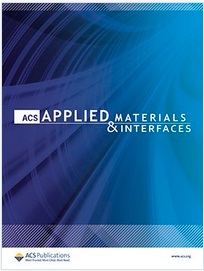The development of tissue scaffolds able to provide proper and accelerated regeneration of tissue is a main task of tissue engineering. We developed a nanocomposite gel that may be used as an injectable therapeutic scaffold. The nanocomposite gel is based on biocompatible gelling agents with embedded nanoparticles (iron oxide, silver, and hydroxyapatite) providing therapeutic properties. We have investigated the microstructure of the nanocomposite gel exposed to different substrates (porous materials and biological tissue). Here we show that the nanocomposite gel has the ability to self-reassemble mimicking the substrate morphology: exposition on porous mineral substrate caused reassembling of nanocomposite gel into 10× smaller scale structure; exposition to a section of humerus cortical bone decreased the microstructure scale more than twice (to ≤3 μm). The reassembling happens through a transitional layer which exists near the phase separation boundary. Our results impact the knowledge of gels explaining their abundance in biological organisms from the microstructural point of view. The results of our biological experiments showed that the nanocomposite gel may find diverse applications in the biomedical field.

